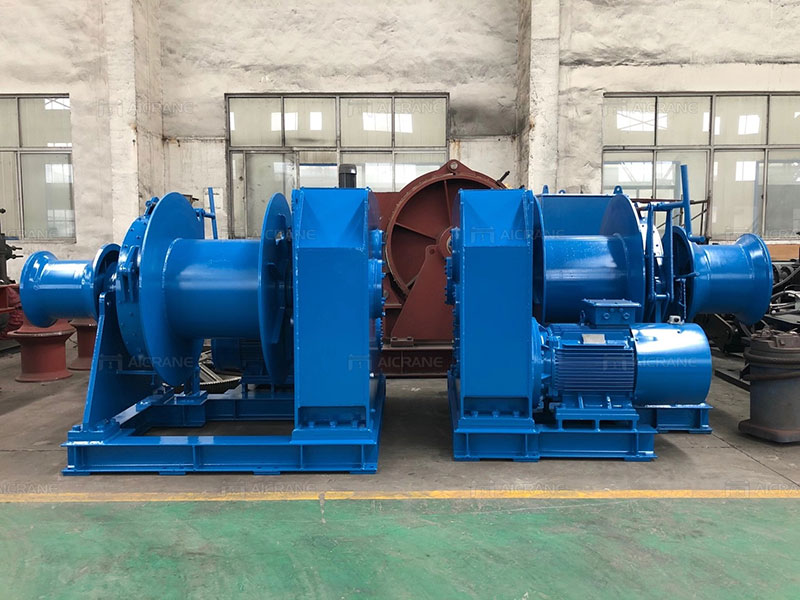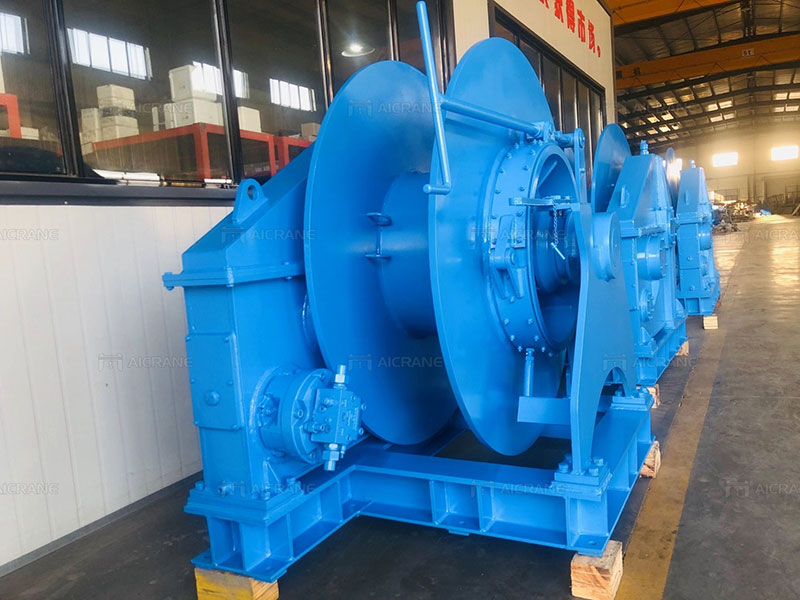A mooring winch is a machine used to secure a vessel to a dock or anchor. It is typically mounted on the deck of the vessel and is used to pull in or release the mooring lines. The winch consists of a drum, which is used to wind up the mooring lines, and a power source, which can be either electric, hydraulic, or pneumatic.
Mooring winches are available in a range of sizes and capacities, depending on the size and weight of the vessel being moored. They are commonly used on cargo ships, oil tankers, and other large vessels. The mooring winches are designed to provide a high level of control and precision when maneuvering the vessel, and are often equipped with advanced features such as automatic tensioning and spooling systems.

The operation of a mooring winch requires skill and experience, as improper use can result in damage to the vessel or injuries to crew members. As such, proper training and safety protocols are essential for anyone operating a mooring winch.
Two Types of Mooring Winches
There are two main types of mooring winches: single-drum winches and double-drum winches.
Single-drum winches: These winches have a single drum that is used to wind up the mooring lines. They are typically used on smaller vessels or in situations where space is limited. Single-drum winches are also commonly used as anchor winches.

Double-drum winches: These winches have two drums, which can be used to handle multiple lines simultaneously. They are commonly used on larger vessels or in situations where multiple mooring lines are required. Double-drum mooring winches can also be used for towing operations, as they provide greater control and stability.
Both types of mooring winches can be powered by electric, hydraulic, or pneumatic systems, depending on the specific application and requirements of the vessel. It’s important to choose the right type and size of winch for the vessel and application, as using an inappropriate winch can result in damage to the vessel or crew injuries.
Selection Guide on A Mooring Winch
When selecting a mooring winch for a vessel, there are several factors to consider to ensure the winch meets the specific requirements of the application. Here are some key factors to consider:
Vessel size and weight: The winch must be able to handle the weight and size of the vessel, as well as any additional weight of cargo or equipment being carried.
Line size and length: The winch must be able to accommodate the size and length of the mooring lines required for the vessel.
Operating environment: The winch must be able to operate in the environmental conditions in which the vessel will be operating, such as saltwater, high winds, or extreme temperatures.
Power source: The winch can be powered by electric, hydraulic, or pneumatic systems, so it’s important to choose the right power source based on the specific application and requirements of the vessel.
Control system: The winch should have a reliable and easy-to-use control system that allows for precise maneuvering and control of the vessel.
Safety features: The electric and hydraulic mooring winch should have appropriate safety features such as automatic tensioning and spooling systems, emergency stop controls, and overload protection.
Maintenance requirements: The winch should be designed for easy maintenance and repair to minimize downtime and ensure reliable operation.
Overall, selecting the right mooring winch for a vessel requires careful consideration of the vessel’s specific requirements and operating conditions. Consulting with a qualified marine equipment supplier can help ensure the winch is properly selected and installed.
